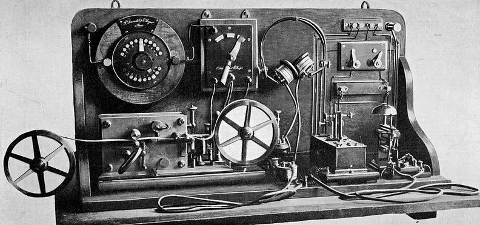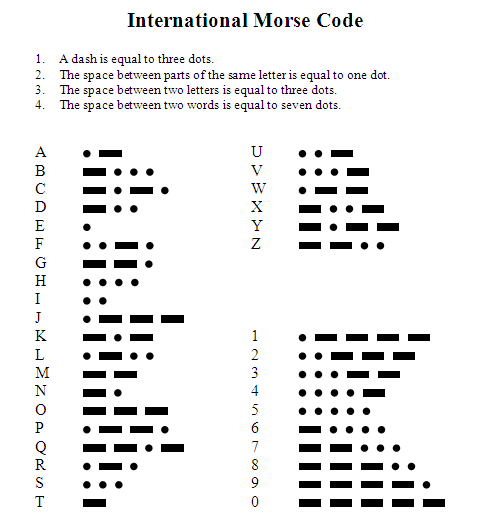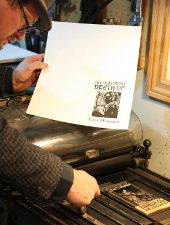The Porcupine's Quill
Celebrating forty years on the Main Street
of Erin Village, Wellington County
Instructor Resources
The Mysterious Death of Tom Thomson:
Study Guide
Skip to:
- Visual Literacy
- Building Instructions
- Texting
- Morse Code
- What Is a Wordless Novel
- Exercise
- Materials
Visual Literacy
Paul Arthur was one of the most successful graphic designers working in Canada in the 1950s and 60s. One of Paul’s most prestigious commissions was to create wayfinding signage for Expo ’67 in Montreal which became a triumph of simplicity and clarity. Words were used if necessary, but pictures were favoured and colour was deemed to be indispensible. Some two dozen custom pictographs were developed for Expo, including male and female washroom signs which were at once too simple as well as too similar, and led to confusion and confrontation until they were replaced by more illustrative versions. More successfully, animal silhouettes identified the parking areas; not only highly memorable and therefore very effective, they also became symbolic of the modernity exemplified by the Expo experience.

Building Instructions
Students will also be familiar with the ubiquitous sort of wordless instructions included in every carton of IKEA furniture. Take, for example, the twelve pages of instructions which detail the assembly of a Billy bookcase—one of the least complex of any IKEA product.
Providing these instructions without words provides a huge cost-saving advantage for a company that was founded in Sweden, is headquartered in the Netherlands and sells its products in forty-nine countries.
Further Reading:

Download and read the assembly instructions for the IKEA Billy bookcase. Credit: IKEA.
Texting
| 🙂 | 😬 | 😇 | 😍 | 😳 | 😛 | 😂 |
Texting with embedded icons is one way that secondary school students (and others) communicate regularly using images; and yet, communicating with icons does presuppose a basic level of visual literacy as well as a shared visual vocabulary. Test the validity of this theory by completing the "Visual Literacy Exercise: Emoticons" below in the Exercise section.
Our suspicion is that you will not achieve unanimity, but that you will recognize a general concensus that will be broad enough to confirm that the students do share a ‘basic level of visual literacy’ as well as a ‘shared visual vocabulary’. These are precisely the skills that will be required to interpret and to appreciate Wordless Novels in general, and George Walker’s Mysterious Death of Tom Thomson in particular.
Morse Code

Photograph of telegraph transmitter and receiver, originally published in ’La Telegraphie Sans Fil’ (Wireless Telegraphy, 1914). Photo by Alphonse Berget (1860-1934). [Public Domain.] Via Wikimedia Commons: https://commons.wikimedia.org/w/index.php?curid=38064426
On July 10, 1917, Dr James MacCallum received a telegram from Shannon Fraser, proprietor of Mowat Lodge at Canoe Lake in Algonquin Park. The scrap of paper, featuring the logo of the Great North Western Telegram Co., read as follows: ‘Tom’s canoe found upside down. No trace of Tom since Sunday.’ On July 16, six days later, Shannon Fraser sent another message, this time with worse news: ‘Found Tom this Morning.’
Alexander Graham Bell had demonstrated a working telephone in Brantford in 1876. The Bell Telephone Company was created the following year and in ten years expanded service to 150,000 customers in the eastern United States, but Bell’s new-fangled invention was not in common use in Canada in the early part of the twentieth century, and particularly not in the wilds of Algonquin Park. The electric telegraph, on the other hand, had been introduced by Samuel Morse as early as 1838 and spread rapidly in conjunction with the building of railways in the nineteenth century.
Each Morse code symbol represents either a text character or a procedural phrase and is represented by a unique sequence of dots and dashes. The dot duration is the basic unit of time measurement in code transmission. The correct length of a dash is three times the duration of a dot. Each dot or dash is followed by a short silence, equal to the dot duration. The letters of a word are separated by a space equal to three dots (one dash), and the words are separated by a space equal to seven dots.

International Morse Code by James Kanjo. Licence: CC BY-SA 3.0. Via Wikimedia Commons: https://commons.wikimedia.org/w/index.php?curid=3703528
In April of 1912 the radio-telegraph operator on the Titanic was one of the first to broadcast the Morse-coded internationally-recognized sos distress signal—three dots, three dashes and three dots. Operators on other ships within radio range were confused by the message, because everyone knew the Titanic had been designed and built to be unsinkable.
Morse code was, at one time, favoured by amateur radio operators and it is still used in modern avionics to manage air traffic control of the largest and most sophisticated jet aircraft, particularly with vhf omnidirectional range (vor) and distance measuring equipment (dme).
What Is a Wordless Novel?
The wordless novel is a unique form of storytelling that communicates a narrative entirely in images, without the use of captions, speech bubbles or other ancillary forms of text. First published in Europe during the early decades of the twentieth century, when public concern around issues to do with social justice and the rife potential for abuse in a capitalist economy was prevalent, wordless novels came to be associated with stories that furthered contemporary political and social agendas, particularly from the wistful perspective of the dispossessed.

Printmaker George A. Walker holds up a print of the image and type from the cover of The Mysterious Death of Tom Thomson.
The images in wordless novels are not, typically, colourful, of the sort you might expect to see in children’s picture books, but they often embrace the comparative starkness of images that are created using nineteenth-century relief printmaking techniques. Relief printing requires artists to draw pictures in reverse onto blocks of wood or linoleum, then to cut away areas that are intended to remain white in the final print. The raised portion of the finished block, which contains the image to be printed, is then coated with ink before being pressed onto paper, resulting in a black-and-white image. Various types of relief printing include wood engraving (in which the image is worked into the endgrain of maple or boxwood with engraving tools), woodcut (which uses parting tools, knives and gouges on the plank of the wood) and linocut (in which the image is cut into a piece of linoleum).
Individual images contain visual elements that allow attentive readers to establish contextual information such as time, place and mood. When presented in sequence, these elements coalesce with visual allegory, metaphor and symbols to communicate meaning. By deciphering the visual clues in each image, readers can follow the plot of the narrative and trace character development as well as begin to develop an understanding of whatever message it is the story may be trying to impart.
Wordless novels require a certain basic proficiency in visual literacy to be able to ‘decode’ the thread of the narrative as it unfolds. Readers must be able to deploy a variety of skills including observation, comprehension, analysis, order and sequencing and visual assessment. Readers must also be willing to employ a degree of creativity in order to develop and refine their interpretation of the events depicted. Readers are not, however, constrained in any way by language. Since wordless novels do not rely on text to communicate meaning, the stories that they tell are equally accessible to those proficient in any language, at any level of reading or learning ability.

George A. Walker engraves a wooden block from The Mysterious Death of Tom Thomson.
Further Reading:
Consult Tom Smart’s "What Is a Wordless Novel" for a consideration of the artistic precursors of George A. Walker’s wordless novel The Mysterious Death of Tom Thomson
(Download in the Materials section below.)
Exercise
Download the file "Visual Literacy Exercise: Emoticons" in the Materials section below.
Split the class into manageable focus groups of six to eight students each. Ask each group, working independently, to match the emoji in the left-hand columns with the accompanying (scrambled) list of possible ‘meanings’.
(Remind students that they may choose to suggest alternate ‘meanings’ that may be equally appropriate.)
Materials
This Study Guide is available as a free download in Pdf format to anyone interested in using it as an aid to teaching George A. Walker's The Mysterious Death of Tom Thomson (2012). The Guide may not be copied and offered for sale by any third party. This Study Guide is produced with the support of the Ontario Media Development Corporation and the Ontario Ministry of Education.

The Porcupine's Quill would like to acknowledge the support of the Ontario Arts Council and the Canada Council for the Arts for our publishing program. The financial support of the Government of Canada through the Canada Book Fund (CBF) is also gratefully acknowledged.
The Mysterious Death of Tom Thomson:
- Introduction
- Who Is Tom Thomson?
- Visual Literacy
- Source Materials
- Theories & Hypotheses
- Master Class
- Appendix A: Glossary of People & Places
- Appendix B: Chronology of Events
- Download the Study Guide
